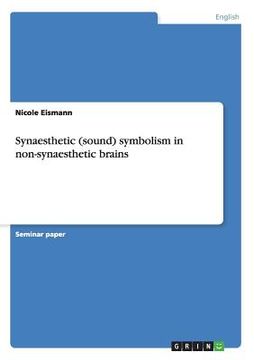Synopsis "Synaesthetic (sound) symbolism in non-synaesthetic brains"
Seminar paper from the year 2014 in the subject English Language and Literature Studies - Linguistics, grade: 2.0, University of Bonn (Institut für Anglistik, Amerikanistik und Keltologie), course: Language and Cognition, language: English, abstract: As far as possible within its limitations, this paper is going to answer the question whether non-synaesthetic people are able to connect the sense of taste, the auditive, the visual and the tactile sense with each other. While most of the synaesthesia studies focus on visual stimuli like colours or graphemes, this paper is mainly concerned with the auditive sense, represented by phonemes. However, since the visual sense is one of the most important senses for humans, and for the sake of comparability, visual stimuli in form of colours and different shapes are also included in the questionnaire. In order to give the reader a proper overview of the topic, a short literature review, which gives information about the literature that is the base of the paper, can be found in chapter 2. Subsequently, in chapter 3, one finds a description of the methodology on which the research based on: the evaluation of data taken from a questionnaire. The presentation of the results of this research follows in chapter 4 as well as a detailed discussion of these results, which can be found in chapter 5 right in front of the conclusion in chapter 6. Everyone is aware of the fact that the sense of taste is strongly connected with the sense of smell. People, who are due to special circumstances not able to smell properly, often lose their appetite because they cannot really taste the food. But what about the other senses? Is tasting also connected with the visual or the auditive sense, or are there in general connections between other senses than smell and taste? People in a special neurological condition called synaesthesia are able to draw these connections. Ramachandran and Hubbard describe synaesthesia as a "condition, in which an o

